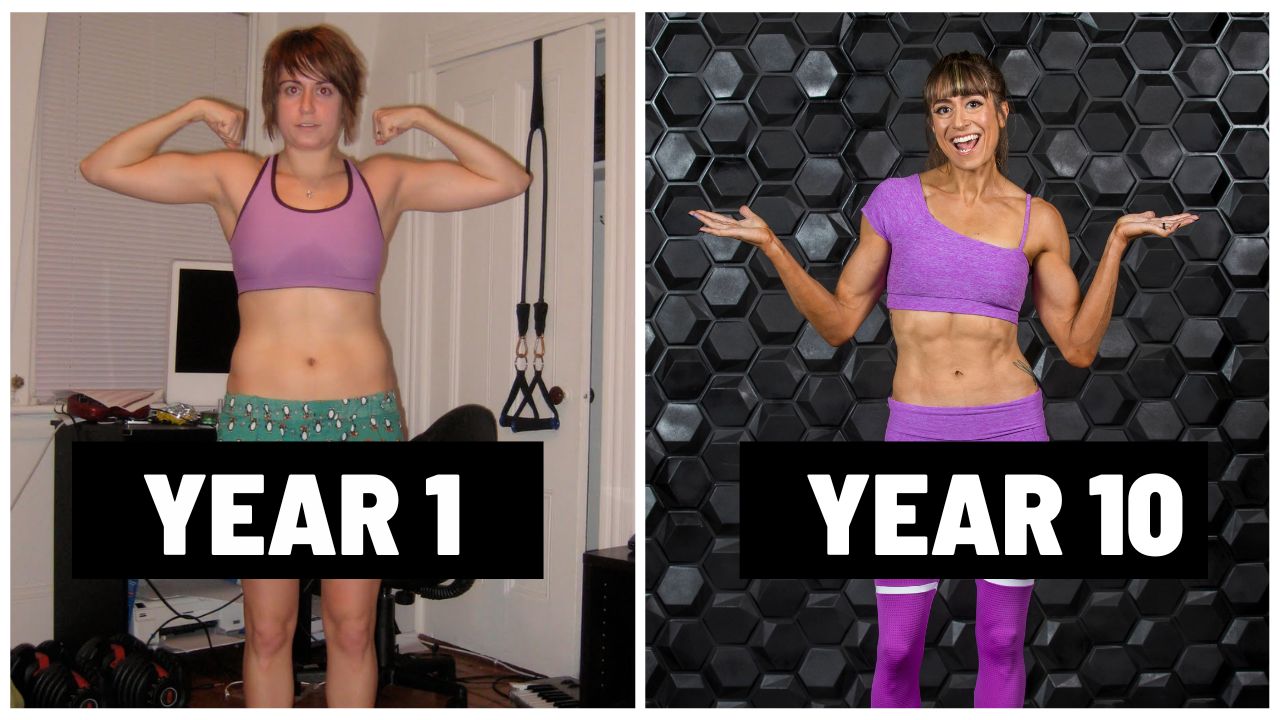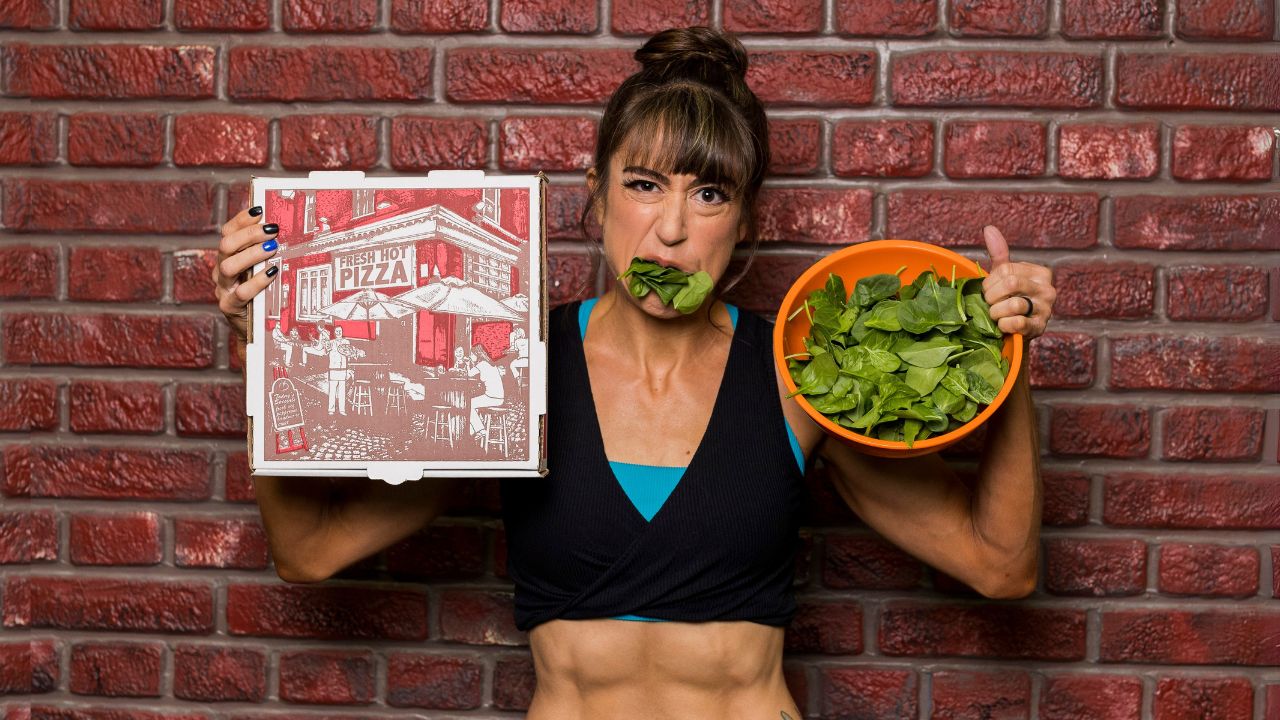
10 Years Of Fat Loss Advice In Under 10 Minutes
I wanted to lose fat and get ab definition for the longest time and struggled hard. I blamed it on willpower. My love of food. My genetics.
But I realized it was that I didn’t fully understand these 10 hard truths I’m going to share with you now.
Because I want to help you jump ahead using what I learned over more than a decade!
Starting with the fact that faster results mean CHOOSING to make more sacrifices.
Think of it this way, we all have a budget.

The more motivated we are, the more comfortable being uncomfortable with the changes we are, the greater our budget. The more “in pain” we are, the greater the cost we’ll pay to see results happen faster.
We’ll embrace harder changes. We’ll choke down that chicken and broccoli if you need. The COST is worth the reward.
But if we aren’t as motivated, the goal isn’t as important, other priorities are in the way and we really aren’t comfortable with the changes needed, our budget will be smaller.
The cost of some of the changes, working out 5 days a week, may not be worth it for you.
We need to recognize our budget when we determine how we want to make changes. We need to OWN that we choose how to spend it!
And owning we have a smaller budget isn’t a bad thing, it just helps us manage expectations.
This can help us recognize if we do want faster results, we may have to increase our budget!
And with habit change, what we like to do and need to do often aren’t one in the same.
We may LIKE follow along workouts. We may LIKE not eating protein at every meal. But your goals don’t truly care what you like.
I’m not saying to force yourself to constantly repeat habits you hate. Those won’t last.
But we need to recognize when we’re saying, “That won’t work” to a new habit, or “I don’t like this” and we’re not truly considering, “Is this what is needed to reach my goal?”
You’ve got to ask yourself, “Would I really care if I had to do (insert thing you don’t like here) if I reached my goal?”
Because many of the daily habits we do to have the life we want aren’t things we love. We just do them.
Give new habits TIME to really feel what they are like. Set a firm testing length to allow yourself to fully embrace them and see how they work.
To lose fat and maintain a new physique you can’t just eat and train in the way you always have.
Because your results are the sum of your habits.
That being said, we are creatures of comfort and convenience. The harder a new habit is, the less likely we are to embrace it. The easier an old habit is, the harder it is to break.
That’s why hard truth #3 is Adjust don’t eliminate.
The more we can ADJUST what we are doing over eliminating things, the easier and more sustainable the changes feel.
Instead of just cutting out foods you love, first start by seeing how you can…
Adjust portions of these foods at meals, maybe two oreos and greek yogurt over 4 oreos.
Or B. Making healthier swaps to the recipes or dishes, like baking sweet potato french fries instead of frying them. Or even making a pizza at home loaded down with veggies and protein.
Yes, there are more and less nutrient dense foods, but we need to own our lifestyle if we want to change our lifestyle. Change is a process that doesn’t happen overnight.
So if you enjoy pizza and french fries and ice cream, instead of just telling yourself these things are bad and that you can’t have them, find a balance working them in.
Same thing goes for macros. We need to stop demonizing any specific macro.
Fats will not make you fat. Carbs are not going to cause you to store belly fat.
Both of these macros are key and the exact amounts you need will vary based on your activity level, health concerns and age.
Even cycling macro breakdowns that are low carb or low fat may improve your fat loss results.
While fat is key for hormonal balance, and going lower carb can help us deplete glycogen stores to tap into our fat stores, we also want to note the more active we are, the more carbs we may need.
Carbs are protein sparring, improve our thyroid health and create that anabolic environment for muscle growth. They can be key to us getting that definition especially when training hard.
And by cycling higher carb after higher fat/lower carb ratios, you may benefit from what is deemed the “Whoosh Effect.”
If you’ve ever felt like you looked SOFTER while going lower carb, your fat cells may be holding on to water.
When we increase carbs after a lower carb period, your body can often release this water, helping you see the definition you want as your body feels it is then getting the immediate fuel it needs to stop basically protecting your fat stores.
So stop demonizing any macro. They are all key and should be cycled!
And while all macros matter, hard truth #5 is protein matters most for fat loss.
When we create that calorie deficit, we even want to think about 40% of our calories coming from protein.
This extra emphasis on protein when in a deficit not only helps you lose fat but keep your metabolic rate higher through protecting the lean muscle mass you have.
We need more protein when we’re in a deficit to not only fuel muscle mass growth and retention but also to rebuild and maintain the health of our other body tissues and processes.
If we don’t focus on protein, especially while training hard, our body is going to seek out those amino acids for repair from wherever it can. And our biggest and easiest to use reserves are our current muscle tissue, which we don’t want to lose!
So focus on protein!
This can also help you feel fuller and create a greater calorie burn even at rest as protein requires more energy to be digested!
And going hand in hand with increasing protein is focusing on our hydration!
As we increase our protein, we also want to increase our water intake to help our body process the protein efficiently.
Water is also required for many metabolic and hydrolysis reactions meaning that water helps our bodies burn fat and keeps our metabolic rate higher.
Lipolysis, the process by which our bodies break down fat to make it absorbable and usable, is also dependent on water.
So staying hydrated means better fat loss results. And with getting enough water, make sure you aren’t ignoring the importance of electrolytes to maintain that balance, especially if you are lower carb!
And if we want the best results possible, our diet and our workouts need to work together.
But often when we want to lose fat, we turn to doing more cardio because we often not only feel like we’re working harder, but we see that higher calorie burn on our tracker.
However, this desire to burn more calories in our workouts and out exercise our diet or even create a bigger deficit through our training holds us back.
You need to STOP trying to out exercise your diet.
Have you ever thought…“I workout so hard consistently but I’m not losing fat. I don’t get it…”
It’s your diet. No ifs ands or buts about it.
And you can say you eat well or eat clean all you want, but you can still overeat or eat portions not in line with your goals while eating quality fuel.
You can’t just rely on doing more in your training to burn more calories and make up for any deviations in your nutrition. You can’t just have a cheat day then hit the treadmill to make up for it. While this may have once worked, it’s what’s going to sabotage your metabolic health long term so you start to blame age for your weight gain.
You also have to recognize when you are creating an even greater deficit from your training and then NOT eating enough to fuel and repair. This can also prevent your fat loss results and lead to muscle being lost.
Training should be about moving well, staying functionally fit and healthy and even improve our muscle mass to keep our metabolic rate higher, not just be a time we try to burn as many calories as possible!
When we try to burn as many calories in our sessions as possible, we also often turn our strength workouts into purely cardio sessions. Stop doing this!
While this may make your workouts feel hard and you feel destroyed, this is preventing you from truly lifting heavy enough to promote those optimal muscle gains.
So if you’re feeling super out of breath from your lifting sessions while cutting out rest then complaining you aren’t building muscle, this may be part of the problem!
The cold hard truth is strength workouts are honestly more beneficial for fat loss than cardio especially if we want to truly look more defined and maintain our results long term.
When we build muscle, we help ourselves maintain metabolic health and improve our insulin sensitivity and so much more that only makes losing fat that much easier!
So while cardio has benefit, and shouldn’t be demonized, emphasize strength work for fat loss!
Now some of these truths may not sound fun and I do like to emphasize the hard so we recognize that change isn’t easy.
But if we don’t find ways to make our lifestyle changes FUN, we won’t stick with them long term.
While you may not enjoy doing a specific habit directly, try to connect it with other things you enjoy or allow it to lead into those things so you can change your mindsets about it.
If you like cooking, get yourself some new macro friendly cookbooks.
If you like listening to podcasts and hate meal prepping, get to listen to extra podcasts because you’re meal prepping as you do it.
Even get yourself new exciting tools to make what may feel like a boring habit more fun. Things like new leggings can make you want to workout. Or a fun water bottle can help you remember to hydrate!
But find ways to help yourself make habits more fun, if not at least tolerable!
And then…Fight the urge to do more.
When we want results faster, it’s tempting to do more in an attempt to try to speed things up.
This almost always backfires. It can not only physically but mentally burn us out. It can lead to us doing completely unsustainable habits.
The more you feel the mental resistance against a change, even one I’ve listed here, the more you need to break it down to find the smallest step forward you will embrace.
When I say increase protein to 40%, if you’re hitting like 15% of your calories from it, first shoot for 16%, maybe 20.
But realize that an ideal may be the goal…eventually, but you have to meet yourself where you are at now over always trying to do the maximum possible!
For a custom plan and guidance to help you rock those results and create LASTING changes, check out my 1:1 Online Coaching.






